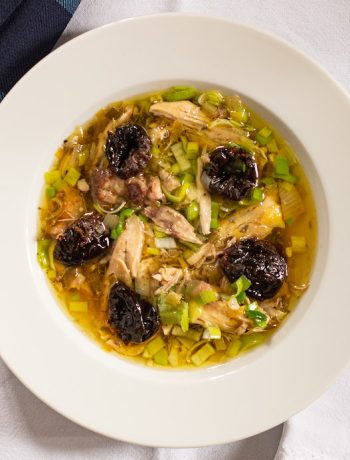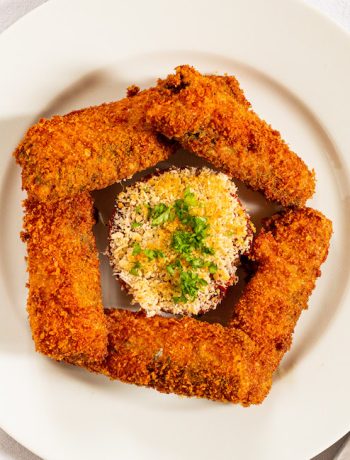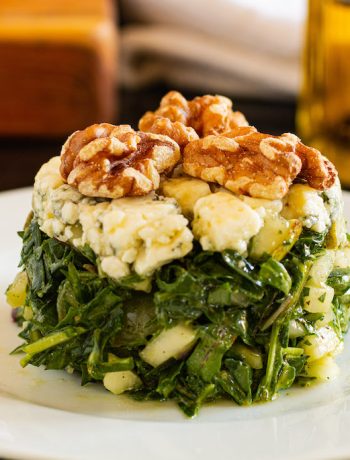Soufflé is a technically awkward French dish that could not have been invented before people understood egg chemistry. This has to place the invention of the soufflé in France in the early 18th Century. With those facts established, it comes as no great surprise that the genesis of the soufflé was in the kitchens of the World’s first celebrity chef – Marie-Antoine Carême.

Marie-Antoine Carême
Carême is credited with inventing the ‘mother sauce’ system of cooking, vol-au-vents, cream profiteroles, boeuf Rossini and the rather soufflé-like chef’s hat. He was the chef to leaders on both sides of the Napoleonic Wars (Napoleon Boneparte and King George IV), and was briefly engaged by Tsar Alexander I, for whom he did not so much as boil an egg.
The term ‘soufflé’ comes from the French ‘souffler‘ which means ‘to blow up.’ If only making a soufflé was a straightforward as putting dynamite under a rock. A successful soufflé requires that a sauce of custard-like consistency is folded into stiffly whisked egg whites, and baked in a specially prepared container with absolutely no interference during the cooking, Once made, a soufflé will go from majestic to cowpat in under 5 minutes.
We have posted a recipe for cheese soufflés below, and if you follow this you will get a good result. But there are some key techniques that you must look after to avoid disaster:
- You must prepare the mould in advance and properly. You need to brush or wipe the inside with butter, and then flour it thoroughly.
- The ratio of egg whites to sauce is 4 egg whites to every pint of sauce. Do not whisk the whites in advance of making the sauce or they will let down and leach water.
- It is absolutely critical that the mixture is folded to homogeneity (no evidence of uncombined whites), but without over working it and removing the air. This is done by lifting sauce from the bottom of the mixing bowl with a spatula and putting it on top (i.e. ‘folding’).
- Once poured, most dessert soufflés benefit from having the inside of the cooking vessel rim wiped with a cloth. This cannot be done for cheese soufflé, so don’t bother trying.
- Some cooks (see the video here from Alex French Guy Cooking) advocate putting cheese on top to assist the trapping of air. This is not really necessary, and I worry that it will cause the mixture to snag on the side of the ramekin.
- You absolutely must not open the oven during cooking, nor must you jolt the oven. If your kitchen is not on a ground floor (mine on a suspended first floor), then you are better off not walking around while the soufflé is cooking.
- Soufflés must be served absolutely immediately.
As you can imagine that list of eight items is borne out of me getting it wrong about eight times. The photo on this page was the first time I nailed it – and even Andrew spotted that I still was not perfectly homogenous on my mix.
If you are going to make a cheese soufflé (and I recommend you do because they are awesome), then take a look at the video from Alex below, and follow our quantities. Broken down, you are going to make a béchamel sauce, add cheese to make a mornay sauce, add egg yolks to make an enriched mornay, combine that with merengue-like whites, and then bake it – carefully.
Soufflé au fromage
Ingredients
- 2 eggs, split into yolks and whites
- Butter and plain flour for greasing and dusting
- 15g plain flour
- 15g unsalted butter
- 250ml milk
- 40g mature cheddar or other nutty hard cheese (e.g. gruyère), grated
- 1 tbsp chives, chopped
- Pinch of salt
- Dash of lemon juice
- Salt and freshly ground white pepper
Instructions
Start by greasing a ramekin with butter and dusting the inside thoroughly with flour. Chill in the fridge for an hour Remove from the fridge when you start to make the soufflé sauce.
Heat an oven to 200˚C.
Heat the 15g of butter in a saucepan and add the 15g of flour. Combine into a roux and cook out the flour for about a minute. Add 2 tbsp of the milk and combine into the roux over a medium heat. Repeat until half the milk is used. Then start adding larger volumes of milk until all is combined into a smooth, glossy, lump-free sauce.
Add the cheese to the sauce, and stir in until completely smooth. Add the chives and season. Nutmeg can be grated in if liked. Allow the sauce to cool a little before whisking in the egg yolks (you need the sauce to be cool enough not to scramble the eggs). You will now have a beautifully rich mornay and chive sauce.
Add the the lemon and pinch of salt to the egg whites and whisk to soft peaks (use a machine if you have one). Take about a quarter of the egg whites and mix them thoroughly into the sauce. Pour the sauce over the remainder of the egg whites and fold the whites in by lifting sauce from the bottom and placing it on top if the mixture. Do this over and over until the egg whites are combined, but the mixture is still nicely aerated.
Pour the mixture to fill your ramekins to about three quarters full, put them on a baking tray and place them in the oven. Immediately turn the oven down to 180˚C and set a timer for 20 mins. Get as far away from your soufflés as possible. Leave the country if necessary.
Once cooked, the soufflés should be well risen with a flat, golden top.
Remove from the oven, perform a victory celebration and serve immediately.




 (9 votes, average: 3.56 out of 5)
(9 votes, average: 3.56 out of 5)


2 Comments
Karl Stolpstedt
28/08/2020 at 7:48 amForget the rating – this is great! Haven’t done soufflé in a long time (when I was without work), but it was fun. As I recall it, some recipes used potato flour. Dunno if I remember it right and besides, maybe that’s cheating…
Nigel Eastmond
28/08/2020 at 9:04 amThanks for the note. I am not sure who gave this recipe a low rating as it is just the classic way to do cheese souffle. There is no other way to make it, really.